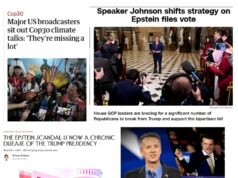If the Northern Virginia Regional Commission has its way, local jurisdictions will buy power from a solar or wind farm in the near future. Photo credit Christoffer Reimer.
The Northern Virginia Regional Commission has selected a consultant to assist area localities in a joint procurement of renewable energy. Participating cities and counties will be able to aggregate their demand to get the kind of economies of scale that have allowed corporations like Amazon and Facebook to lower their energy cost by investing in large solar and wind farms.
On November 17, NVRC announced that Customer First Renewables, a national expert in matching large energy users with renewable energy projects, will serve as its technical advisor. Customer First Renewables and NVRC plan to issue a Request for Proposals (RFP) to identify one or more “shovel-ready,” large scale projects to present to NVRC’s thirteen member governments. Those local governments will individually decide whether to participate in the group purchase.
According to a Request for Qualifications that NVRC issued in its search for a consultant, the project(s) to be selected must be greater than 10 megawatts in size and result in new renewable energy capacity added to the grid. Preference will go to projects located in Virginia or in the regional grid that serves Virginia, known as PJM.
NVRC will act as a central contact and facilitator, but it will be up to the participating localities to negotiate a contract. NVRC Director Robert Lazaro said discussions with representatives of area localities indicate the interest is there for a major renewable energy buy like this. Arlington, Alexandria, Manassas Park, and Falls Church are among the jurisdictions most interested, with others possibly joining as they learn more.
“We see this as a way to green the grid, save money, and assist the solar industry in Virginia,” said Lazaro.
Niels Crone, Senior Vice President for Business Development at Customer First Renewables, said his company was excited to be involved in the procurement effort. “We are delighted to work with NVRC to help Northern Virginia jurisdictions get affordable, large-scale renewable energy,” he said.
NVRC is following an ambitious timeline. A project workshop for local government staff is scheduled for December 11, and a Request for Proposals (RFP) is due January 2, 2018.
How does a group purchase work?
Amazon and other large corporations have become major drivers of new wind and solar projects in PJM, including several large solar farms in Virginia. The steadily-tumbling costs of wind and solar make it possible for the companies to green their energy supply while lowering their overall energy costs using innovative financing approaches. Not all of these would work in Virginia, but one that does is the wholesale, or “virtual” power purchase agreement.
A virtual PPA allows a customer to buy and sell energy in the wholesale market, avoiding potential obstacles such as a utility’s monopoly on the retail sale of electricity.
Local governments in Virginia buy electricity from Dominion Energy Virginia at retail under a contract negotiated by the Virginia Energy Purchasing Governmental Association (VEPGA). That contract makes Dominion their only electricity supplier, and Dominion currently does not offer wind or solar as an option. A virtual PPA would not change this relationship; Dominion will continue to supply localities with electricity from its (decidedly un-green) power plants.
A virtual PPA would, however, let participating localities contract for the output of a renewable energy project, with the electricity sold into the wholesale market rather than delivered to the localities. Given the right project, the price for the electricity in the wholesale market could exceed the price paid to the project owner under the PPA, allowing the localities to pocket the difference—indirectly lowering their energy costs. The localities would also receive an additional benefit in the form of renewable energy certificates generated by the projects, demonstrating they have legally “greened” their energy supply.
There is some financial risk involved, since the PPA price is fixed, while wholesale prices fluctuate. Part of Customer First Renewables’ job will be to find the best project economics with the least risk. Corporate buyers, universities and large institutions around the country have used this approach successfully to lower their energy costs and meet their sustainability goals.
As members of the Metropolitan Washington Council of Governments (MWCOG), Northern Virginia localities are committed to reducing greenhouse gas emissions to 80 percent below 2005 levels by 2050, with an interim goal of 20 percent by 2020. MWCOG’s 2017-2020 Regional Climate and Energy Action Plan (available here) also sets a target of meeting 20 percent of the region’s electric consumption from renewable sources by 2020.
As the report notes, however, “There needs to be an immense undertaking to meet the 2020 and 2050 goals.” Here’s hoping Northern Virginia is ready to do its share.




![Saturday News: “Trump’s latest tariff TACO probably won’t make your life more affordable”; “The Epstein Email Cache: 2,300 Messages, Many of Which Mention Trump”; “[MTG] questions if Trump is still the ‘America First’ president”; “Jim Ryan tells all: ‘What did the Governor know, when did he know it?’”](https://bluevirginia.us/wp-content/uploads/2025/11/montage1115-238x178.jpg)








![Saturday News: “Trump’s latest tariff TACO probably won’t make your life more affordable”; “The Epstein Email Cache: 2,300 Messages, Many of Which Mention Trump”; “[MTG] questions if Trump is still the ‘America First’ president”; “Jim Ryan tells all: ‘What did the Governor know, when did he know it?’”](https://bluevirginia.us/wp-content/uploads/2025/11/montage1115-100x75.jpg)
